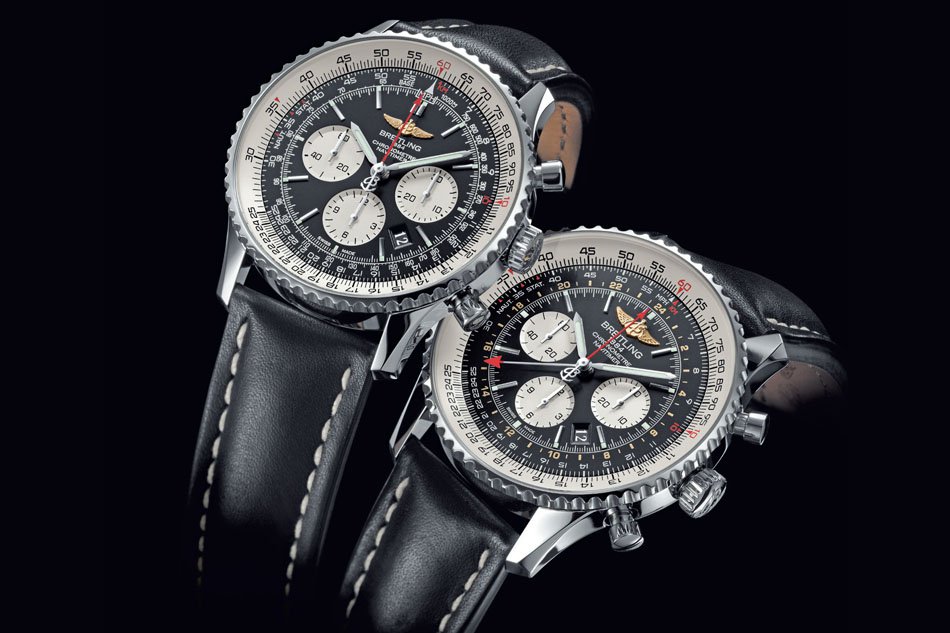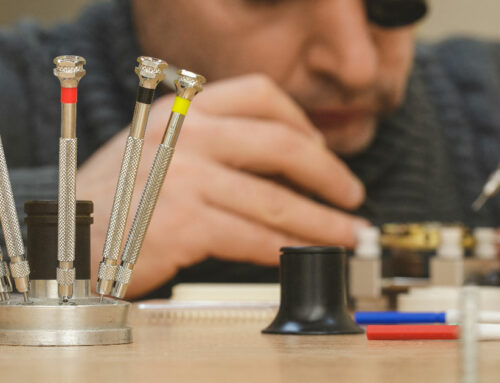Explorers have been wearing watches to aid in their travel and discovery for years and some of the most famous explorers are known for the watches they wore with them. Here are four timepieces that made historic firsts.
 When railroads ruled transportation of people, products and cargo, it came to the attention that a more accurate timetable to manage the detailed schedules of trains coming and going was needed. After a particularly bad accident when one train conductors watch stopped and two trains collided, Webster Clay Ball was brought in to become the chief time inspector. Ball’s watches were very precise, never losing more than 30 seconds per week, and were easier to read and longer lasting with better, sturdier parts. The Railroad Grade became the standard for other watchmaking firms and is still a legacy among American Watchmakers.
When railroads ruled transportation of people, products and cargo, it came to the attention that a more accurate timetable to manage the detailed schedules of trains coming and going was needed. After a particularly bad accident when one train conductors watch stopped and two trains collided, Webster Clay Ball was brought in to become the chief time inspector. Ball’s watches were very precise, never losing more than 30 seconds per week, and were easier to read and longer lasting with better, sturdier parts. The Railroad Grade became the standard for other watchmaking firms and is still a legacy among American Watchmakers.
 In the 60’s, Rolex designed an experimental watch (The Deep Sea Special) that was attached to the hull of a submersible made to dive down in the deepest point in the Pacific ocean to explore the bottom of the Mariana Trench. Rolex took what they learned from that mission and developed a commercial version of that watch which became known as the Rolex Sea-Dweller. In 2012, Rolex made the DeapSea Challenge, waterproof to depths of 12,000 meters, when James Cameron replicated the Mariana Trench Expedition. Rolex had already broken some firsts, with being the first watch to climb Mount Everest and the first to break the sound barrier.
In the 60’s, Rolex designed an experimental watch (The Deep Sea Special) that was attached to the hull of a submersible made to dive down in the deepest point in the Pacific ocean to explore the bottom of the Mariana Trench. Rolex took what they learned from that mission and developed a commercial version of that watch which became known as the Rolex Sea-Dweller. In 2012, Rolex made the DeapSea Challenge, waterproof to depths of 12,000 meters, when James Cameron replicated the Mariana Trench Expedition. Rolex had already broken some firsts, with being the first watch to climb Mount Everest and the first to break the sound barrier.
 Breitling created the Navitimer for pilots that made it easier to do quick calculations while in the air and became the official watch of the Aircraft Owners and Pilots Association. Scott Carpenter brought the Breitling Cosmonaute into space when he wore it during the Project Mercury mission and circled the earth three times, therefore becoming the first chronograph watch in space.
Breitling created the Navitimer for pilots that made it easier to do quick calculations while in the air and became the official watch of the Aircraft Owners and Pilots Association. Scott Carpenter brought the Breitling Cosmonaute into space when he wore it during the Project Mercury mission and circled the earth three times, therefore becoming the first chronograph watch in space.
 Not to be outdone, the Omega Speedmaster was the first watch to be worn not only in space, but outside the space capsule – in the vacuum of space. Buzz Aldrin work the Speedmaster on the Apollo 11 mission to the moon and it became widely known as the Moonwatch. Later, during the Apollo 13 mission’s catastrophe, Jack Swigert used his Omega Speedmaster to course correct the shuttle so the astronauts could make it back safely to earth
Not to be outdone, the Omega Speedmaster was the first watch to be worn not only in space, but outside the space capsule – in the vacuum of space. Buzz Aldrin work the Speedmaster on the Apollo 11 mission to the moon and it became widely known as the Moonwatch. Later, during the Apollo 13 mission’s catastrophe, Jack Swigert used his Omega Speedmaster to course correct the shuttle so the astronauts could make it back safely to earth






I was able to find good info from your content.|